40 Years of the Porsche 917
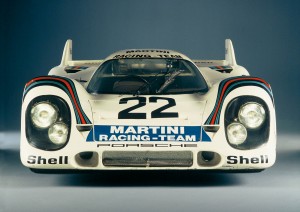 Forty years ago on March 13, 1969 at the Geneva International Motor Show, today’s Dr. Ing. h.c. F. Porsche unveiled a car that, even by today’s standards, is underestimated when it is described as the “super sports carâ€: The Porsche 917. It became a legend as one of the fastest and most successful racing cars of all time.
Forty years ago on March 13, 1969 at the Geneva International Motor Show, today’s Dr. Ing. h.c. F. Porsche unveiled a car that, even by today’s standards, is underestimated when it is described as the “super sports carâ€: The Porsche 917. It became a legend as one of the fastest and most successful racing cars of all time.
Porsche fired the starting shot for Project 917 in June 1968, after the international motor sports authority or FIA had announced a class of “homologated sports cars†with up to five liters cubic capacity and a minimum weight of 800 kilograms. Under the supervision of Ferdinand Piëch, the stipulated 25 units of the new racing car model were completed by April 1969 so that the 917 could begin its racing career in the same year. After it initially dropped out of its first three races due to technical problems, the 917 success story began in August 1969 at a 1,000-kilometer race at the Österreichring with a victory by Jo Siffert and Kurt Ahrens.
The engine configuration of the 917 was just as unusual as its different car body versions: Behind the driver’s seat extended an air-cooled, twelve-cylinder engine with horizontal cylinders, whose crankshaft designated it as a 180-degree V engine. The 520 HP engine had an initial cubic capacity of 4.5 liters. The tubular frame was made of aluminum, the car body out of glass fiber reinforced synthetics. Porsche engineers developed different car body models to best meet the different demands of different racetracks. The so-called short-tail model was designed for heavily twisting roads in which a high contact pressure was necessary for fast cornering. The long-tail model was designed for fast racetracks and a high final velocity. Then came the open 917 Spyders, which were used in the CanAm and Interseries races.
At the end of the 1970 race season, Porsche confirmed its superiority with the 917 and 908/03 models, winning the Racing Series World Championship [Markenweltmeisterschaft] in nine out of ten possible victories. This series of victories began in Daytona and continued in Brands Hatch, Monza, Spa, on the Nürburgring racetrack, at the Targa Florio, in Le Mans, Watkins Glen and the Österreichring. However, the season’s high point was the long-desired overall win of the Le Mans 24-hour endurance race, a trophy that Hans Herrmann and Richard Attwood brought home to Zuffenhausen on June 14, 1970. Their 917 short-tail model painted in the Porsche Salzburg colors of red and white with the start number 23 not only successfully defied its competitors but also the heavy rainfall.
As in the previous year, the 1971 season was dominated by the 917 model so that the Racing Series World Championship [Markenweltmeisterschaft] went to Porsche again with eight out of ten race victories. And once again, a Porsche 917 was victorious at the Le Mans 24-Hour race – this time with Gijs van Lennep and Dr. Helmut Marko, who set a world record with an average speed of 222 km/h and 5,335 kilometers driven, a record that still stands today. One special feature of their 917 short-tail model, visually characterized by its “shark finâ€, was the tubular frame made of magnesium. A 917 long-tail coupe model set a further record in 1971: On the Mulsanne straight stretch, which is part of the route in the Le Mans 24-Hour race, the sports car with the start number 21 recorded the highest speed of 387 kilometers per hour. Another Le Mans racecar achieved major recognition: The Porsche 917/20 was a mix between the short-tail and the long-tail models and was notable for its broad proportions. Although the pink colored racecar, nicknamed “the Pigâ€, dropped out halfway through the race, its unusual paint color made it one of the most famous Porsche models ever.
When the European FIA regulation for the “five-liter sports car†expired at the end of the 1971 season, Porsche decided to enter the Canadian American Challenge Cup (CanAm). In June 1972, the private Penske race team in motor sports used the turbo-charged Porsche 917/10 Spyder for the first time. With a performance of up to 1,000 HP, the Porsche Spyder dominated the race series and won for Porsche the CanAM championship with victories in Road Atlanta, Mid Ohio, Elkhart Lake, Laguna Seca and Riverside. In the following year, the 1,200 HP 917/30 Spyder had its racing premiere. The superiority of the monster car driven by Mark Donohue was so obvious that the regulations of the CanAM series had to be changed in the end in order to exclude the 917/30 from competing further in the 1974 season. Typical for Porsche: The technologies for increasing performance developed for these races were successfully transferred to the on-road sports car. That’s how the 911 Turbo, with its side-exhaust turbocharger, began its career in 1974 and has been, since this time, a synonym for the performance capacity of the Porsche sports car.
To date, the reputation of the 917 is legendary. Therefore, 50 international motor sports experts from the famous British trade magazine “Motor Sport†nominated the 917 as the “greatest racing car in historyâ€. All in all, Porsche built 65 units of the 917: 44 sports cars as short-tail and long-tail coupés, two PA Spyders as well as 19 sports cars as CanAm and Interseries Spyders with up to 1,400 HP turbo engines. Seven of the most important 917 models – among them the Le Mans victory cars from 1970 and 1971 and the 917/30 Spyder – are currently on exhibit in the new Porsche Museum in Stuttgart-Zuffenhausen.

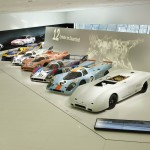
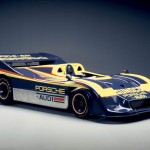
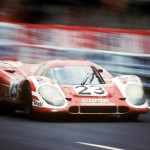
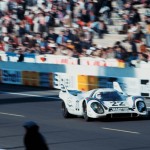
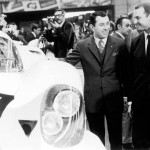
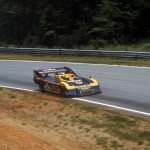
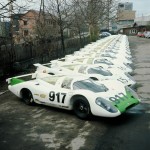
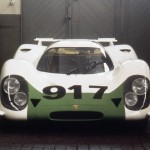
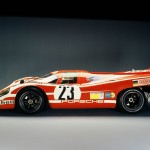
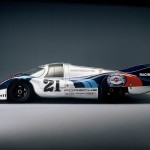
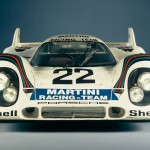
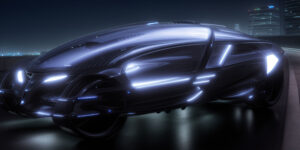



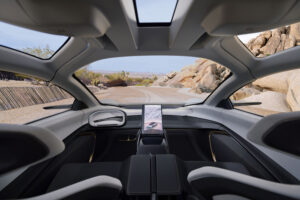

Thanks for the excellent biography of the amazing Porsche 917! Naturally there is much more that could be written about this watershed race car – there are many lengthy books whose only topic is the 917. The early examples were difficult to control as the aerodynamics were not understood completely. Once the tail was modified to add downforce it became a car that won at every venue. Thanks again –